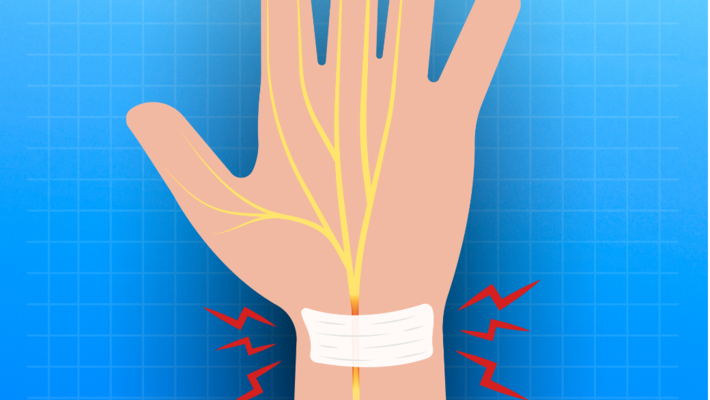Symptoms for Carpal Tunnel Syndrome risk
Health News
23 Oct 2025
views
Symptoms for Carpal Tunnel Syndrome risk
In an era where daily life is tied to computer screens and smartphones, bone and muscle disorders have become common problems, especially Carpal Tunnel Syndrome (CTS), which is increasingly affecting working adults who perform repetitive wrist movements every day. This is not a minor issue to overlook, as severe symptoms can lead to permanent loss of hand function.
Carpal Tunnel Syndrome occurs when the median nerve, which runs through the carpal tunnel in the wrist, is compressed by thickened ligaments. This results in abnormal sensations. Symptoms indicating you are at risk include :
- Numbness in Specific Fingers (Be Alert) : Numbness or a pins-and-needles sensation occurs only in the thumb, index finger, middle finger, and half of the ring finger. If the pinky finger is not numb, this is a key sign of CTS.
- Severe Symptoms at Night : Most patients experience increased numbness and burning pain in the hand at night, often waking them up to "shake their hand" for relief.
- Decreased Hand Strength : Starting to feel noticeable weakness in the hand, difficulty gripping objects, frequently dropping things, or being unable to make a tight fist as before.
- Radiating Pain : The pain may not be limited to the wrist but can radiate up the forearm or even to the shoulder.
If these symptoms occur continuously, or persist for 2-3 weeks without improvement after resting the hand, you should see a specialist immediately.
Who is the "At-Risk Group" that Needs Special Caution?Key factors that trigger this condition include prolonged repetitive or unnatural wrist positioning, as well as certain health conditions :
- Office Workers and Gamers : Those who use a mouse or type for many hours non-stop, keeping the wrist in an extended or flexed position.
- Occupations with Repetitive Hand Use : Homemakers (wringing clothes, cooking), craftspeople, tailors, or those who work with vibrating tools.
- Health Factors : Patients with diabetes, rheumatoid arthritis, hypothyroidism, or pregnant women experiencing fluid retention.
- Take Regular Breaks : Use the 20-20-20 rule for eye rest, and take periodic wrist breaks when performing long, repetitive tasks.
- Stretching : Regularly exercise and stretch the wrists and fingers throughout the day.
- Supportive Gear : Use accessories to keep the wrist in a neutral position, such as wrist rests for keyboards or mice.
- Monitor Symptoms : If chronic numbness occurs, do not self-medicate. Consult a doctor for targeted treatment, which may include medication, wearing a wrist splint, or physical therapy.

Follow Our Social Network


